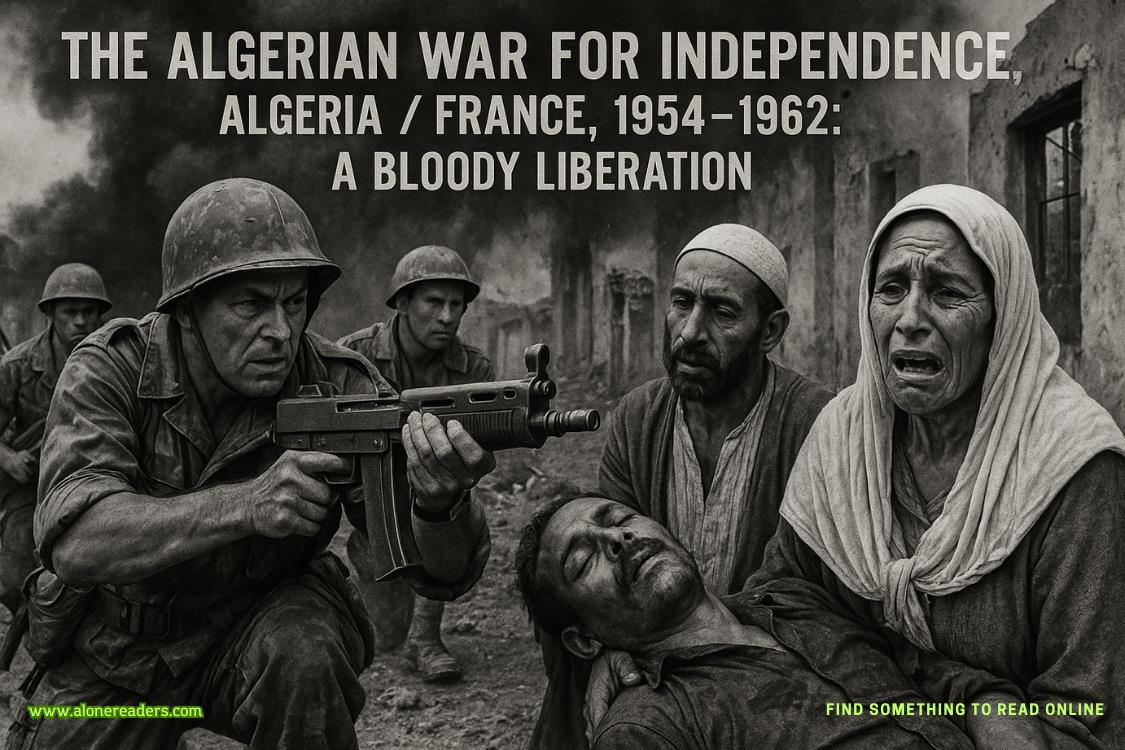Page 8 of The Cabinet of Dr. Leng
When she paused, Kunz gestured for her to continue. “Please, milady.”
“My name is Katalyn,” she began. “I come most recently from the former Principality of Transylvania, where my family was in hiding, but my ancestral home is the duchy of Inowroclaw in Galicia. I am of the house of Piast, and trace my lineage back to Casimir IV, Duke of Pomerania. He died, supposedly childless, in 1377 whilst in battle against Wladyslaw the White, and was succeeded by Wladislaus II, who was excommunicated in 1380—apparently, the last duke of Inowroclaw. However, unbeknownst to the territory-hungry Wladislaus, Casimir had a son—Casimir V—who, in return for aiding Louis I of Hungary during the turbulence that followed Wladislaus’s death, was allowed to claim his rightful duchy, lands, and jewels. Louis demanded unwavering fealty, and my family survived and gained wealth by keeping faith with our kings and valuing loyalty over ambition:a baga mâna în foc pentru cineva. However, this tradition was interrupted when the territory was annexed to Prussia in 1772. My ancestor, then duke of Inowroclaw, fled to Transylvania. Unfortunately, unrest followed: my grandfather died in 1848 during the Hungarian Revolution, and my father in theAusgleichof the Seven Weeks’ War, thirteen years ago. Only my mother and I remained, the last of the once-proud duchy of Inowroclaw. Our title remained intact—transferred down from my father through the female line—as did our considerable fortune. However, when my mother died last year, my existence became known to certain other members of the old house of Piast, a line stemming from the adopted son of Boleslaw V the Chaste. If I were to die without heir, their line would inherit my title and my wealth.” She paused. “I knew that, if I stayed in Transylvania, my life would not be worth a guilder. And so after my mother’s death, I secretly left Europe, traveling alone and under an assumed name. My household, with all my possessions, were to follow me to America six months later—at which time I would make my existence, and my birthright, known.”
Now she fell silent, having apparently concluded her tale.
“And have those six months passed?” Kunz asked. He had gotten totally lost in this tangle of titles and events.
She nodded.
“May I be so bold as to ask: why this need for secrecy?”
“Because my eight servants, along with all my household goods and family possessions, sailed from Liverpool earlier this month…on the SSCity of London. It took much of my fortune to the bottom, with the exception of my jewels.”
It took a moment for Kunz to make the connection: a passenger steamship of that name, he remembered, had vanished a few weeks ago while en route to New York. Forty-one souls had perished.
“Dear God,” he murmured. “I’m so sorry.”
Instead of replying, the young duchess reached into a large handbag, took out a soiled leather envelope, and handed it across the desk. Just as wordlessly, Kunz took it, opened it, and withdrew a folded piece of parchment from within. He laid it on his desk, then unfolded it with great care.
He had seen any number of similar letters patent, real and forged. Across its top were three crests, illuminated, with heavy gilt shading, now as crazed as ancient porcelain. The rest of the document was in black ink, beginning with the wordsLouis Király Nevébenin large calligraphic letters of the Roman Rustic style. At the bottom was a tricolored ribbon, attached with a large wax seal, itself cracked across the middle. Kunz examined the parchment, the crests, and the wax, employing a powerful magnifying glass that he took from his desk—after securing the permission of the duchess to take such a liberty. Although he didn’t understand a word of what he assumed was Hungarian, or perhaps Romanian, he was expert enough in patents of nobility to have no doubt this was genuine. Any qualms Kunz had harbored about this lady, her history, or the provenance of her family treasures were now satisfied.
He folded the document carefully and replaced it in the envelope, which he handed to the duchess. “Thank you, milady. With your permission, we shall continue?”
“I wait upon your pleasure,” came the reply. “I understand that, in these matters, you speak for Tiffany and Company. For reasons I hope are obvious, I require a line of credit from a banking house as soon as possible to cover my expenses. Assuming that we come to terms on the gemstones, I would ask you to provide me with a letter of credit, drawn against Tiffany’s, made out to the Wall Street branch of the Bank of New York, effective today. That will serve as partial payment. No doubt you or Mr. Tiffany will wish to bring in your firm’s personal banker to complete the transfer of the full sum; we can also draw up the legal paperwork to set a date for this, convenient to both you and myself.”
While Kunz understood the first stipulation, the second left him amused. Being a foreigner, she evidently didn’t know that Tiffany’s, the city’s greatest jeweler, had in its basement vault many thousands in ready cash, sufficient, he was sure, to cover the cost of her gemstones.
“I believe you may rest easy, milady,” he replied. “No doubt we can reach an agreement on disbursements—if our, ah, appraisal merits such a step—without difficulty.”
The woman nodded.
“In that case, shall we proceed? I hope you’ll understand that bright natural light is required.”
“I understand,” the duchess replied.
Kunz called out to Gruber, who came back, locked the door behind him, raised the window blinds to their highest extent, then took up his earlier position. Putting the magnifying glass to one side, Kunz opened his desk again and brought out a variety of tools, a beaker of mineral oil, a loupe, and two large squares of the finest black felt, which he laid next to each other on the center of his desktop. Then, pulling on a pair of fine white gloves and smoothing the lapels of his vest, he turned to the woman sitting across from him.
“Your Grace,” he said with a deferential nod. “Shall we begin?”
6
THE DUCHESS REACHED INTOher bag with a gloved hand. Kunz and Gruber exchanged glances. Despite the hundreds, if not thousands of times he’d gone through this exercise before, it was a moment that, for Kunz, never got old.
“I shall tell you what I know of each stone,” she said, taking out a small satin bag closed with a thread of the thinnest gold.
Kunz nodded his understanding, eyes on the satin bag, which the woman now handed to him. Carefully, he undid the gold thread with his white-gloved fingers and eased the stone within onto a piece of felt.
He had made it a rule never to display any emotion, or even facial expressions, at moments such as these, and he did not break that rule now. Nevertheless, he felt disappointed. On the felt lay a good-size emerald of an octagonal, step-cut shape. It was a pastel green, to be sure—but not the darker, almost seaweed shade frequently found among the best stones. Rather, it was of a light-chartreuse hue: lovely, but not of the most desirable saturation. Somehow, he had expected better.
“This stone went by the Greek name of Elysion,” the woman told him. “I believe that is rendered in English as ‘Elysian Fields.’ It came originally from New Granada—I should say, the United States of Colombia.”
Kunz murmured his understanding while he fixed the jeweler’s loupe to one eye, raised the stone gently between a pair of padded forceps, and examined it closely, turning it this way and that in the light. Most emeralds, especially larger emeralds, had inclusions, but this stone was almost free of imperfections.
He was all too aware that the field of gemology, always turbulent, was currently in a particular state of flux. The rules for grading gems—their clarity, color, and particularly size—were given different terms by proponents of this theory or that, and were proving slow to stabilize. Just three years earlier, the Syndical Chamber, a most influential group of Parisian jewelers, had standardized on the proposed “international carat” of 205 milligrams. Kunz preferred a metric carat of 200 milligrams—a fifth of a gram precisely—and used it in his personal evaluations. Of course, anything was better than the days when carat size had been determined by weighing gemstones against the seeds of a carob tree. He estimated this stone to be about 1900 points, and weighing confirmed this approximation: 18.9 carats.
After several minutes, Kunz returned the stone to the felt. He knew that emeralds of this size were rarely flawless—and, if a colored stone displayed no visible inclusions to the naked eye, it would be considered eye-flawless. But this was not such a stone; its tiny flaws were just visible to the eye, and more so under magnification. In clarity and color, it was nevertheless a fine specimen, certainly deserving of a spot in Tiffany’s primary display case.
He cleared his throat. “This is a most beautiful emerald, milady. The hue is lovely. Only in its transparency is it of the second water.” He sat back. “We would be willing to pay a very good price indeed. As much as $3,500, in fact.”















